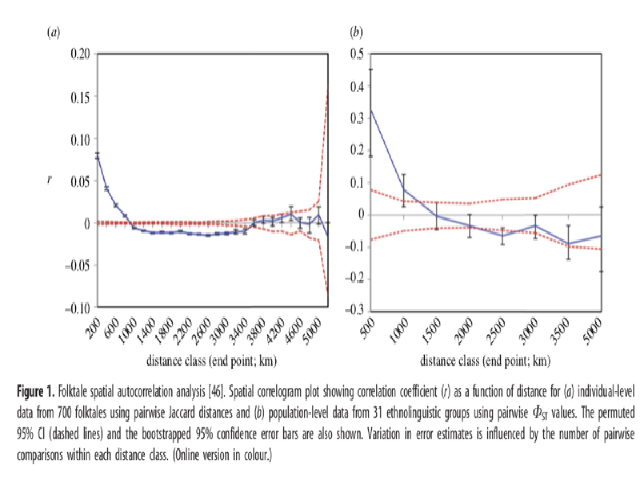Population structure and cultural geography of a folktale in Europe

Authors:
Citation:
Details:
Published: 1 January, 2013.
Download:
Abstract:
Despite a burgeoning science of cultural evolution, relatively little work has focused on the population structure of human cultural variation. By contrast, studies in human population genetics use a suite of tools to quantify and analyse spatial and temporal patterns of genetic variation within and between populations. Human genetic diversity can be explained largely as a result of migration and drift giving rise to gradual genetic clines, together with some discontinuities arising from geographical and cultural barriers to gene flow. Here, we adapt theory and methods from population genetics to quantify the influence of geography and ethnolinguistic boundaries on the distribution of 700 variants of a folktale in 31 European ethnolinguistic populations. We find that geographical distance and ethnolinguistic affiliation exert significant independent effects on folktale diversity and that variation between populations supports a clustering concordant with European geography. This pattern of geographical clines and clusters parallels the pattern of human genetic diversity in Europe, although the effects of geographical distance and ethnolinguistic boundaries are stronger for folk-tales than genes. Our findings highlight the importance of geography and population boundaries in models of human cultural variation and point to key similarities and differences between evolutionary processes operating on human genes and culture.